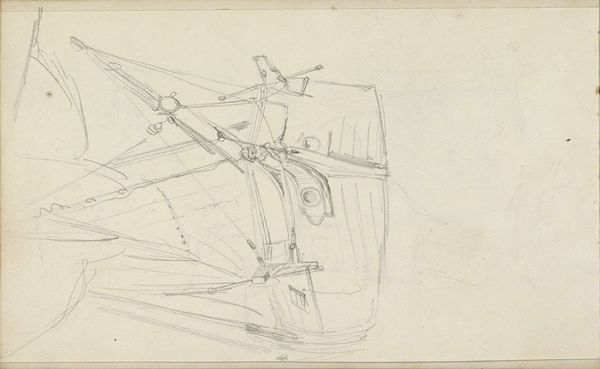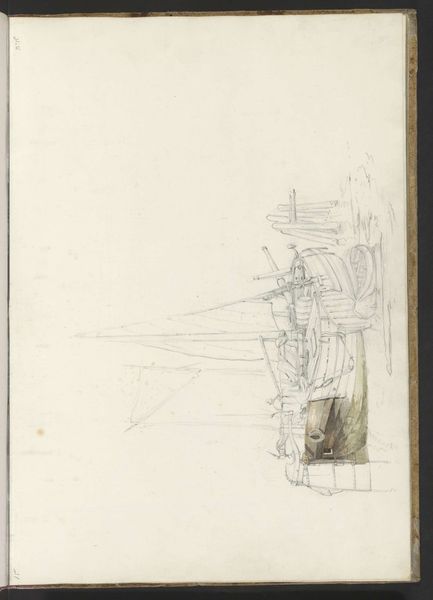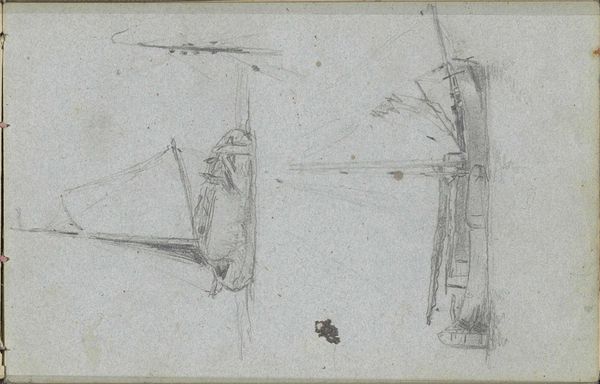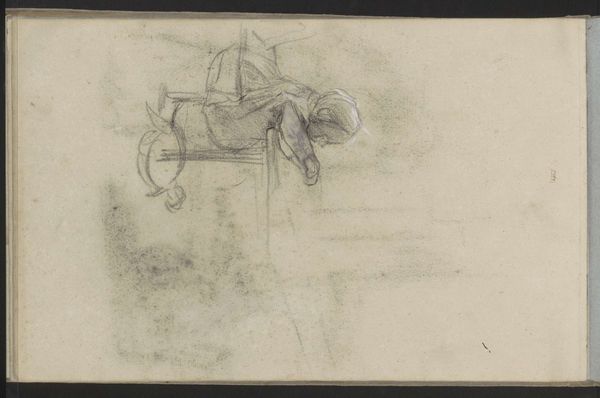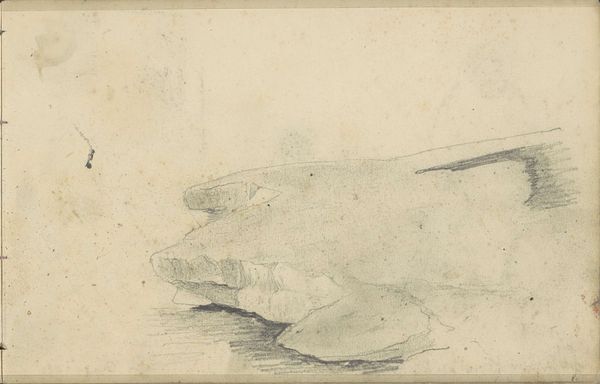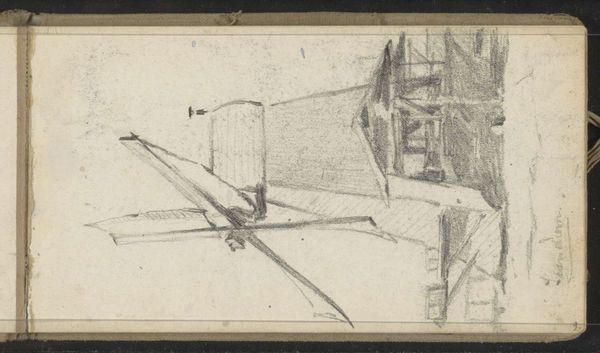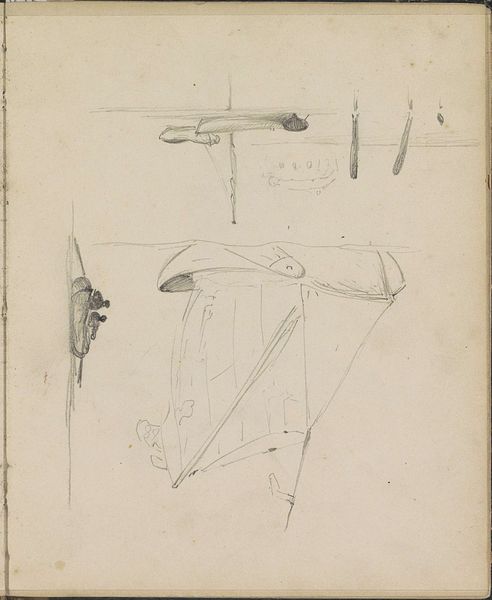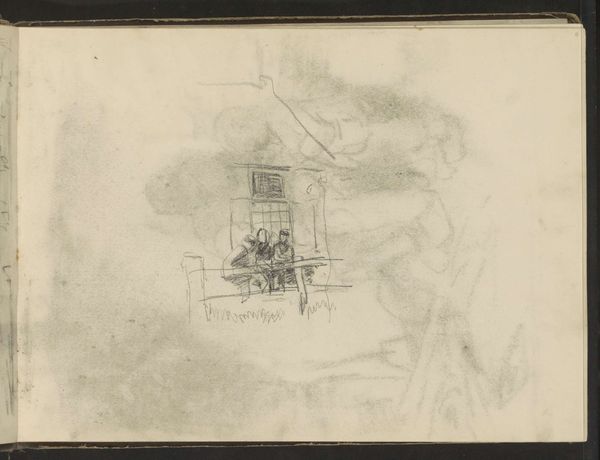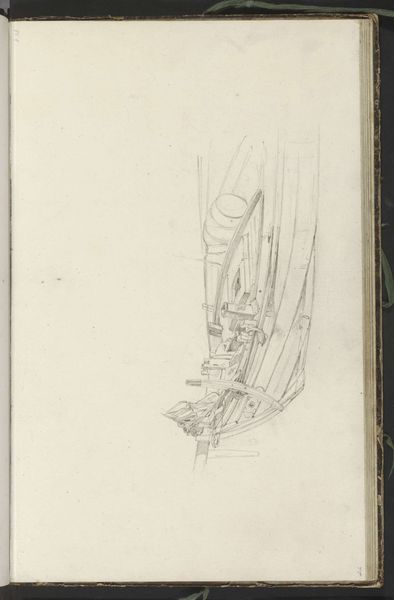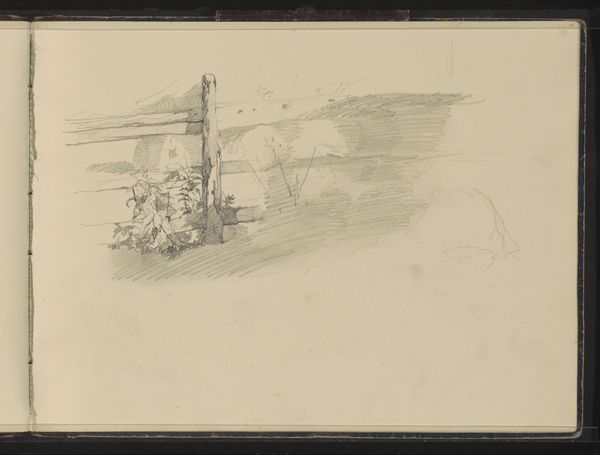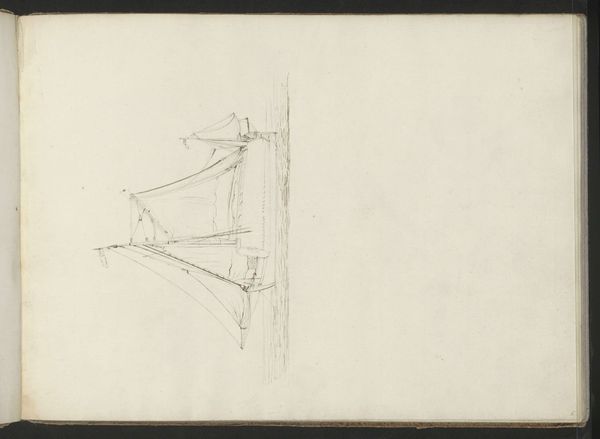
drawing, paper, pencil
#
drawing
#
landscape
#
figuration
#
paper
#
romanticism
#
pencil
Copyright: Rijks Museum: Open Domain
Editor: So, this pencil drawing is called "Figure at the bow of a boat" by Johannes Tavenraat, dating from between 1833 and 1841. It's got this sketchy, unfinished quality which makes me wonder... what’s your take on this, especially regarding its historical context? Curator: What strikes me immediately is its place within Romanticism, a movement very concerned with individual experience, especially when confronted by nature's power. This simple pencil sketch on paper becomes fascinating when we consider the era's changing relationship with maritime life and art's role in shaping public perception. What kind of message might viewers at the time get when considering maritime exploration and the role of human figures within it? Editor: I see your point! It’s not just a boat, it's part of a larger conversation about how people viewed their world. It almost romanticizes labor, maybe? Curator: Exactly! Think about the increasing industrialization occurring. Drawings like these offered a lens onto a disappearing world. The "common man," or figure at the bow, takes center stage in ways that aristocratic portraits previously had. What sort of statement would featuring this sort of character in the context of the rise of industrialization and modernity have for contemporary society? Editor: I hadn't considered that! So, it's not just a drawing of a boat; it reflects shifting social and cultural values, placing importance on everyday life? Curator: Precisely. It elevates the experience of the common figure. And think about where it's held, the Rijksmuseum. What does the institutional decision to collect and display this imply about how Dutch history and identity are constructed? Editor: Wow, I will never look at a simple pencil drawing the same way again. I came in thinking about the mood of the art but learned so much about history! Curator: I'm so glad you see it that way. It's vital to see how cultural and societal changes can shape both art production and what ends up in museums.
Comments
No comments
Be the first to comment and join the conversation on the ultimate creative platform.
